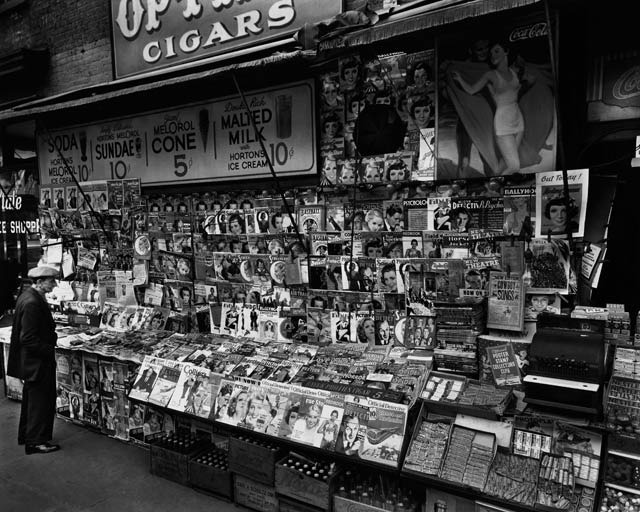It is all
about peopling the void. Crowdedness dispels the paranoia when one is puzzling
over a blank canvas. Regardless of how the result will be it is often an
accomplishment if every corner of the picture is filled. I can also hear music
drifting out of the cluttered image I just finished: the music that is not too
uproarious, but loud enough to warrant me a restful night of sleep. An open,
empty space and a gaping chasm are enough to introduce disquietude into my
otherwise orderly life. My orderly life mainly consists carrying out my role as
a paltry nonentity, namely, “filling up the corner.” Every one of us is like a
grain of sand who is always at the mercy of the ebbs and flows of sea. Crowdedness
is peace, is stateliness, is life.
Architecture
fuels Berenice Abbott’s passion for photography. Every building is a man-made
monster- a monster that is impregnably armoured, a monster that is impossible
to tame. At least, we can imagine Abbott thinking, I can pierce the skin of
that monster, or chop off one of its limbs with my camera. Nothing better to
face the invasion of Industrialism than arming yourself with the right weapons.
In Abbott’s case it is to expose the magnificence and most of the times extreme
ugliness of a bourgeoning city with her camera. This accounts for the reason
why she favoured New York as her main prey.
Unlike Paul
Strand’s photographs of the city, Abbott’s retain the unrelenting chaos New
York is often associated with. People are rendered ant-like and running
pell-mell. Ungainly but forbidding buildings, like swords in a tumultuous
fight, sticking out here and there. I can now imagine Abbott as a paltry
nonentity, trundling through the city like an innocuous animal in a hazardous
forest, and every time when confronted by a fabulous beast, she defends it with
her camera as if it is her white flag. A camera can be everything- it can be a
dangerous weapon, it can be a desperate call of help.
But camera
can never be an effective remedy. At least in the case of a crowd, the camera
can only observe it from a distance but never possesses the power to scotch it
from expanding. The anxiety is common with every inexperienced photographer
whenever tackling the subject of a restive crowd. To try to encompass the
entirety of the crowd with a panoramic view from afar is nothing but an example
of unavowed cowardice. A seasoned photographer will approach the crowd
audaciously, kill off as many objects as possible. The rest of the crowd he
will let it flow away like the irrevocable departure of the migrating birds,
because he knows there will be more entering from the other aside of the lens.
The entering and the departing- this is the moment when the photographer makes
time visible.
Today the
void might be filled. Tomorrow, the collective intelligence drives the crowd to
form its own void. What eventually emerges is a crying abyss, shrieking hideous
curses and expletives that threaten away the sweet dreams. Still quite
peacefully I sleep, when my dreams are no more than a continuous series of
voids. How wonderful is the notion when you are something that is like
everything else.

Comments
Post a Comment